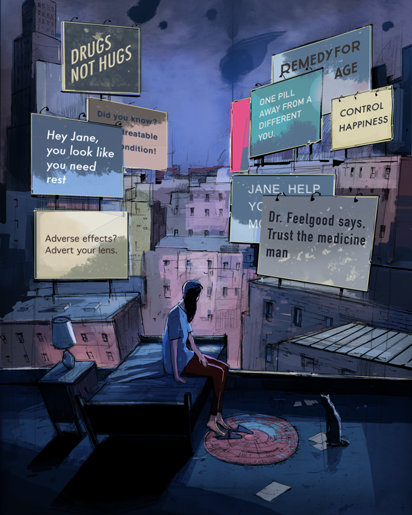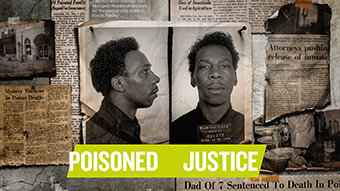
Once upon a time, several psychiatrists and psychologists set up a hospital, Anclote Manor, in the quaint west coast Florida hamlet of Tarpon Springs.
Despite years of fluffy, softball-pitch articles in the local daily newspaper, Anclote in the late 1970s was revealed as a “medieval house of horror,” according to a state prosecutor. Abusive treatments included gross overdosing of psychiatric drugs, strapping people to beds for weeks, and packing patients in ice. A common “cure” prescribed at the hospital was nonstop masturbation. This was science, the learned doctors intoned.
For a newspaper, exposing the goings-on at Anclote was a guaranteed Pulitzer Prize nomination. But the St. Petersburg Times (now styled the Tampa Bay Times) never launched an investigation. The Times reported incidents at Anclote once they became public record, but to say the newspaper lacked zeal for the topic is a serious understatement. What did finally prompt an inquiry into Anclote? The Citizens Commission on Human Rights, co-founded by the Church of Scientology.
The Times has a curious record of targeting adversaries. It savaged honest cops when they were on the trail of corruption. It blitzed the Salvation Army for letting its low-paid executives live in decent housing. But it left Anclote alone. Eugene Patterson, Times editor and CEO while Anclote’s horror show raged, built his reputation on championing civil rights in the South. Still, he apparently found no reason to fight for patient rights at Anclote.
And there is a reason—or two—for that.
A psychiatrist at Anclote, Alfred Koenig, died in 1977—as the abuse revelations were seeping out. Patterson stated in an obituary that Koenig was “my dear friend.” And psychologist Byron Harless was a board member and consultant at the hospital. Notably, he also was a Times vice president, a spot he earned as the first head-shrink to impose psychological testing on the entire staff at an American newspaper, the Times.
So, we know three things:
The newspaper’s top executives knew of the terrible problems at Anclote—because a Times executive, Harless, was involved with the hospital, as was editor Patterson’s “dear friend” Koenig.
The Times—which incessantly self-congratulates its investigative prowess—didn’t scrutinize Anclote until lawsuits and state investigations forced the newspaper to cover abuses at the hospital.
And the Times never told readers of Harless’ and Koenig’s connections between Anclote and the newspaper.
Those ethically toxic conflicts were brewed decades ago, but have parallels today. A Nexis search of U.S. newspaper and wire service articles mentioning “Ebola in United States” returns 2,110 hits. “Psychiatric drugs in United States” nets a meager five. “Psychiatric drugs mass murders” gets one.
Mass murders are huge news. But seldom mentioned among the avalanche of coverage is the fact that most mass murderers have a history with psychotropic drugs. The suicidal Germanwings pilot, the Colorado theater shooter, Columbine, Virginia Tech—on and on. School violence in recent years: 79 dead and 169 wounded. All involve mind-screwing psychiatric drugs.
One Ebola death and four cases total in the United States and the media, in an orgiastic frenzy, focused the nation’s attention on a “crisis” that didn’t exist. Yet when dozens of killers have brains fried by Big Pharma’s little helpers, the blinders are firmly in place. Between 2004 and 2011, there were 12,755 reports to the FDA’s MedWatch system on psychiatric drugs causing violent side effects, including 1,231 cases of homicidal ideation or homicide. Where are the news articles? Only a few can be found.
Smaller, less entrenched news sources are more likely to report the links between psychotropic drugs and mass killers. Members of the big media conglomerates seldom forward the same message.
Major news organizations only dig into the story when a reporter and a newspaper have the ethical and financial strength to withstand an attack by pharmaceutical PR henchmen. A 1991 Wall Street Journal headline read: “Murder Trials Introduce Prozac Defense.” The New York Times, also in 1991, declared: “Suicidal Behavior Tied Again to Drug: Does Antidepressant Prompt Violence?” Then Big Pharma’s front groups and paid shills with MD degrees zeroed in on any journalist who would touch the subject, so now largely they don’t.
Pharmaceutical companies’ pockets bulged with $83.9 billion in profits in 2012. That same year, those outfits spent more than $27 billion to promote their drugs. Drug companies spend 19 times more on marketing than they do on research.
In those marketing budgets are billions of dollars to sabotage any attempt to link mind-killing drugs with killers. And to bury a simple truth: they can’t explain how psych drugs work (and kill).
Media finances are dwindling. One of the few reliable sources of revenue that remains is a never-ending, mind-numbing supply of pharmaceutical advertisements, from drugs to cure toenail fungus to pills promising to perk up lagging libidos.
Compounding that is the financial disintegration of all but a few major media players. Many newspapers and broadcasters would likely collapse if they went cold turkey and stopped mainlining Big Pharma money (including the Tampa Bay Times, which is in a financial tailspin).
Psychiatrists in bygone decades manipulated media through cozy relationships with newspaper bosses—at least in St. Petersburg, Florida. Today, it’s Madison Avenue bagmen toting huge advertising schedules from the corporate drug lords, and bearing the message: Don’t bite the claw that feeds you.
Florida Freedom editor John F. Sugg has received more than three dozen journalism awards for his work at the Miami Herald, The Tampa Tribune and the Creative Loafing group of alternative newspapers.























